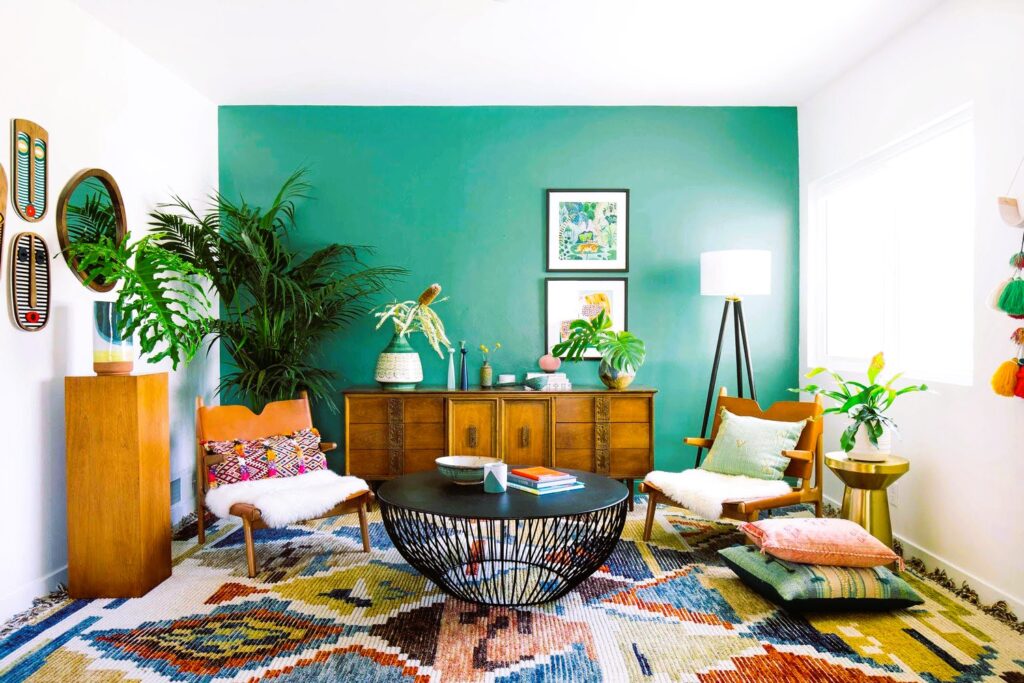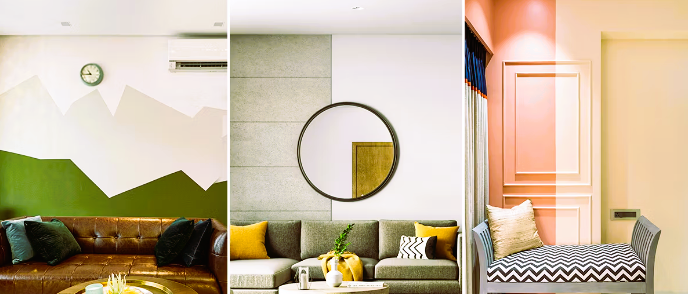In the realm of interior design, color is a potent tool that can dramatically influence the mood and ambiance of a space. One effective way to wield this power is through the creation of accent walls. An accent wall, painted or adorned differently from the rest of the room, can be a game-changer in transforming your space. Let’s explore the art and science behind accent walls and how they have the ability to breathe new life into your home.
Understanding the Role of Color:
Color psychology plays a significant role in interior design. Different colors evoke different emotions and have varying effects on perception. Warm tones like reds and yellows can create a sense of energy and vibrancy, while cool tones like blues and greens can induce calm and relaxation. By strategically employing color, you can shape the atmosphere of your living spaces.
The Concept of Accent Walls:
An accent wall is a focal point within a room that stands out from the surrounding walls. It is an intentional design choice, often achieved through a distinct color, texture, or pattern. The purpose of an accent wall is to draw attention, add visual interest, and create a sense of balance within the space.
Choosing the Right Wall:

The first step in creating an accent wall is selecting the right wall for emphasis. Consider walls that naturally attract attention, such as the one behind a bed, a fireplace, or the wall facing the entryway. The goal is to enhance the architectural features of the room and create a harmonious visual flow.
Selecting the Perfect Color:
Choosing the color for your accent wall is a crucial decision that depends on your overall design goals. Here are some popular approaches:
- Complementary Colors: Opt for a color opposite to the predominant color in the room. This creates a vibrant and dynamic contrast.
- Analogous Colors: Select a color adjacent to the room’s main color for a more subtle and harmonious effect.
- Monochromatic Palette: Use a darker or lighter shade of the existing wall color to add depth and sophistication.
- Bold Contrasts: Go for a bold and contrasting color to make a bold statement. This is particularly effective in neutral-colored rooms.
Texture and Patterns:
In addition to color, texture and patterns can be used to create a visually striking accent wall. Consider options like textured wallpaper, reclaimed wood panels, or a gallery of framed art. These elements add depth and dimension to the space, making the accent wall a captivating focal point. Did you like the article? Read also about Feng Shui in modern design.
Furniture and Decor Considerations:
Once your accent wall is in place, ensure that the furniture and decor in the room complement the new design. The accent wall should enhance, not compete with, the overall aesthetic. Consider coordinating elements such as throw pillows, rugs, or artwork to tie the room together cohesively.
The Impact on Room Perception:

Accent walls can also be employed strategically to alter the perception of a space. In smaller rooms, an accent wall can create the illusion of depth, making the room feel larger. Conversely, in larger spaces, an accent wall can define specific areas or zones, adding a sense of intimacy.
Standards and Guidelines:
When exploring the realm of color and design, it’s valuable to refer to established standards and guidelines. Platforms like Wikipedia offer insights into color theory, design principles, and standards that can inform your decisions. Understanding these guidelines ensures that your accent wall not only looks visually appealing but also adheres to established design principles.
The power of accent walls lies in their ability to transform a space with a simple yet impactful design choice. Whether you opt for a bold burst of color, intricate patterns, or textured elements, accent walls can elevate the aesthetic appeal of any room. By understanding the role of color, carefully selecting the right wall, and considering texture and patterns, you can harness the transformative power of accent walls to create a space that is visually dynamic and harmoniously balanced.
